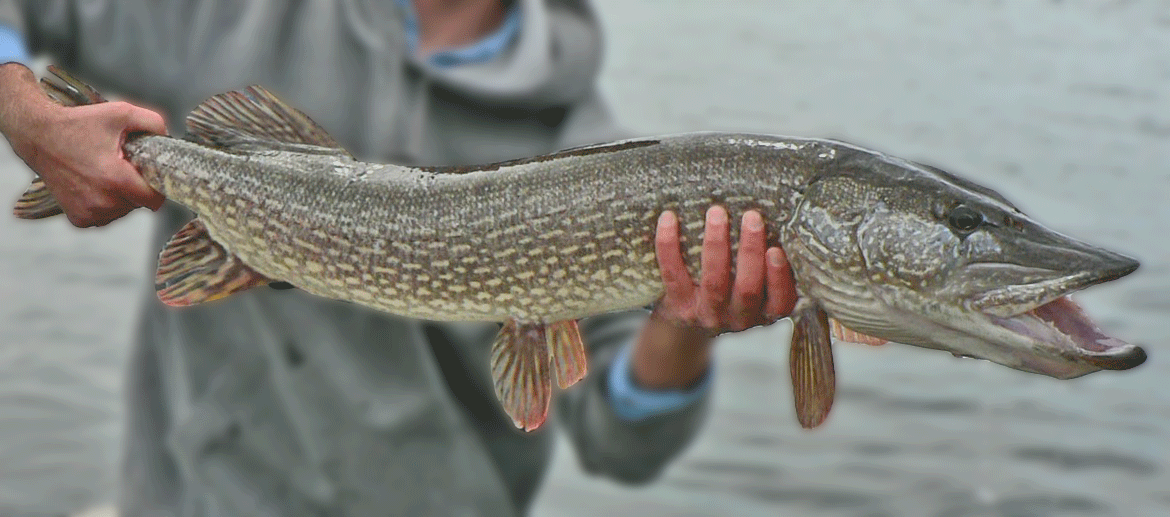
The northern pike (Esox lucius) has a large, elongate body with a large, tooth-filled mouth and a long, pointed snout. Their body exhibits a dark green coloration along the sides speckled with yellow, bean-shaped markings. The darker coloring of their sides fades into a cream-white color on their underbelly. All fins, except for their pectorals, are covered in dark spots.
They are found in the Arctic, Atlantic, and Pacific drainages from Labrador to Alaska as well as down into the Mississippi drainages to Nebraska, Missouri, into Pennsylvania. While they’re not native east of Vermont’s Green Mountains, they have been introduced throughout much of New England. These fish are also native to Europe and Asia.
In the north, these fish are slow-growing and will live up to 26 years. They will grow faster, on average, in their southern range and live 12 to 14 years. While their largest recorded size is 53 inches in length, they are more commonly found between 30 and 40 inches.
Habitat
The northern pike prefers heavily vegetated, clear lakes and rivers ranging from warmer to cool waters. They generally congregate in the quiet stretches of rivers and are found in the weedy bays of lakes. Larger individuals may move away from the shore during the warm, summer months.
Reproduction
Northern pike will usually spawn during April and early May soon after ice has thawed. They can be found in areas as shallow as one foot in marshes bordering lakes and rivers. Spawning will begin when water temperatures reach 40 to 52°F.
A single female will mate with one or two males and release batches of 5 to 60 adhesive eggs over vegetated areas. The eggs will settle on aquatic plants for about 12 to 14 days and will hatch when temperatures reach 48°F. Each female will lay a total of 32,000 eggs with no nests or parental care.
Female pike will reach sexual maturity at three to four years of age in the south and can live up to six years in the northern portion of their range. On average, males will mature about one year earlier.
Diet
Northern pike are aggressive predatorial feeders but have been labeled “omnivorous carnivores” due to their wide range of prey. Young northern pike will begin to feed on small fish within seven to ten days after hatching. Larger individuals will feed on fish, crayfish, frogs, mice, muskrats, and ducklings.
Management
Northern pike are a popular sport fish, especially during the ice fishing season, and are managed under general fishing regulations. See current regulations for waterbody specific information.
Fun Facts
- Other common names: great northern pie, pike, jack, jackfish, common pike, pickerel, great northern pickerel, slimy snake, freshwater shark, grand brochet.
